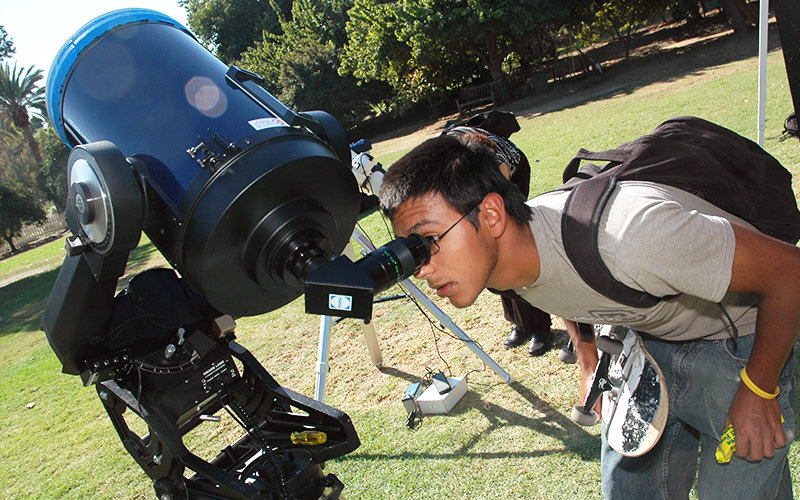
Catch the rare astronomical event of the Transit of Mercury on Monday, May 9 — when the planet moves across the sun’s bright disc. Cal State Fullerton’s Physics Department will host a free public viewing, beginning at 8 a.m., at Fullerton Arboretum.
The transit will start at 5:56 a.m. and end at 11:42 a.m. During the transit, Mercury will come between the sun and the Earth, and the planet will be seen as a small black dot moving across the face of the sun, explained Shovit Bhari, staff physicist. Telescopes, equipped with special solar filters required for observation, will be available for public use.
“Transits like this gives us a chance to visualize our size in the solar system,” he said. Mercury is the smallest of the planets in the solar system and also it is the closest to the sun.
Johannes Kepler, a 17th-century astronomer and mathematician, first predicted that Venus and Mercury would transit between Earth and the sun, added Bhari. The first transit of Mercury was viewed in 1631, though Kepler did not live to witness the event.
There are approximately 13 transits of Mercury each century, Bhari said. The last transit occurred on Nov. 8, 2006. Mercury transits can occur in May or November, with the next transit due Nov. 11, 2019.
Parking is free at the Fullerton Arboretum, located at 1900 Associated Road on the northeast corner of Cal State Fullerton. For campus map and directions, visit online.
Media Contacts:
Shovit Bhari, Physics, 657-278-2148
Debra Cano Ramos, 657-278-4027